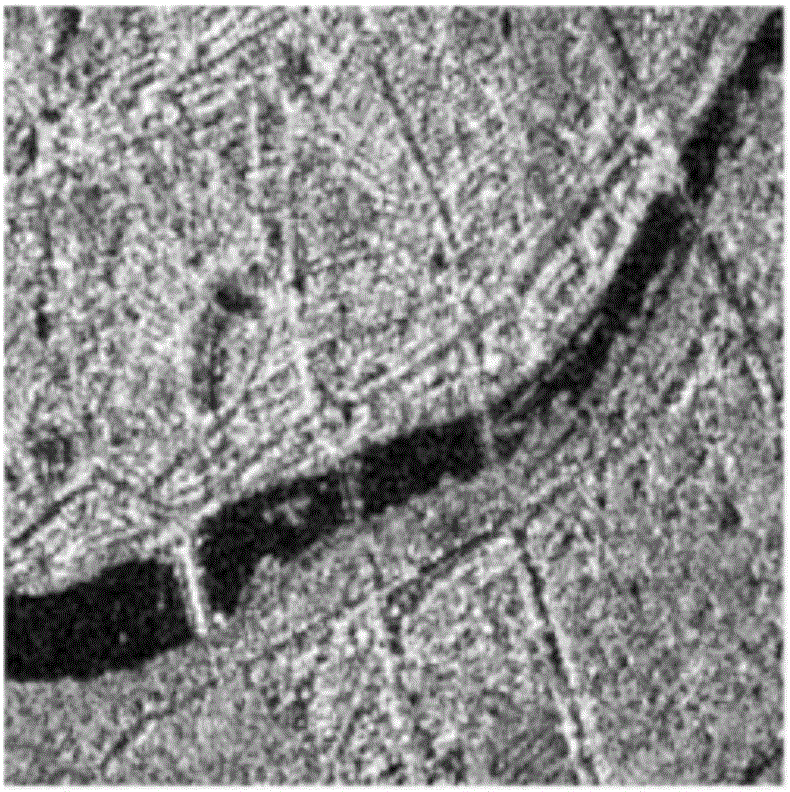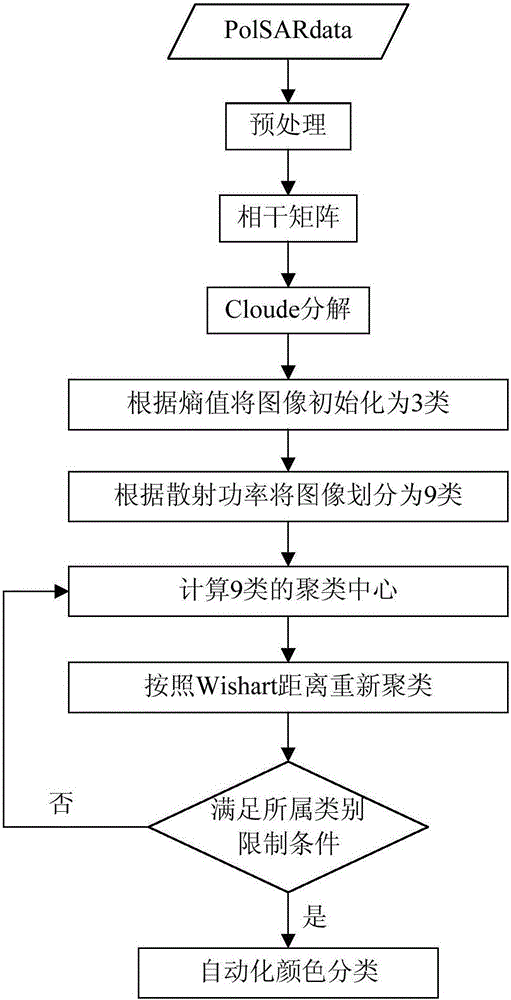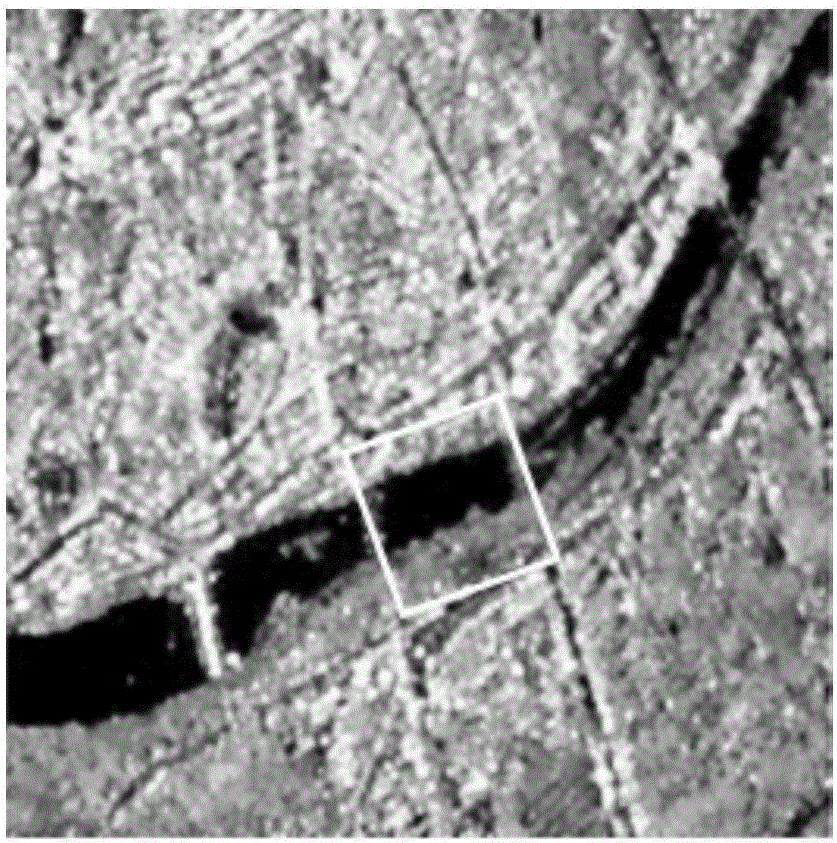Method of classifying polarimetric SAR (synthetic aperture radar) images based on scattering entropy and three-component decomposed plane
A classification method and scattering entropy technology, applied in character and pattern recognition, instruments, computer components, etc., can solve problems such as misclassification, misclassification of moving objects, misjudgment of vegetation areas as surface scattering, etc., to achieve good detail information, The effect of reducing misclassification
- Summary
- Abstract
- Description
- Claims
- Application Information
AI Technical Summary
Problems solved by technology
Method used
Image
Examples
Embodiment Construction
[0043] The specific implementation manners of the present invention will be further described in detail below in conjunction with the accompanying drawings and embodiments. The following examples are used to illustrate the present invention, but are not intended to limit the scope of the present invention.
[0044] Such as figure 1 As shown, it is the original polarimetric SAR image power map of this embodiment, and a SAR image classification method based on scattering entropy and three-component decomposition plane is used to process the image. The process is as follows figure 2 As shown, the specific method is as follows.
[0045] Step 1: Input the polarimetric SAR data to be classified, and perform Lee filter processing to obtain the denoised data. In this example, for figure 1 After denoising the original image as image 3 shown.
[0046] Step 2: Calculate the coherence matrix of each pixel after denoising.
[0047] The Pauli basis is used to vectorize the scattering ...
PUM
 Login to View More
Login to View More Abstract
Description
Claims
Application Information
 Login to View More
Login to View More - R&D
- Intellectual Property
- Life Sciences
- Materials
- Tech Scout
- Unparalleled Data Quality
- Higher Quality Content
- 60% Fewer Hallucinations
Browse by: Latest US Patents, China's latest patents, Technical Efficacy Thesaurus, Application Domain, Technology Topic, Popular Technical Reports.
© 2025 PatSnap. All rights reserved.Legal|Privacy policy|Modern Slavery Act Transparency Statement|Sitemap|About US| Contact US: help@patsnap.com



